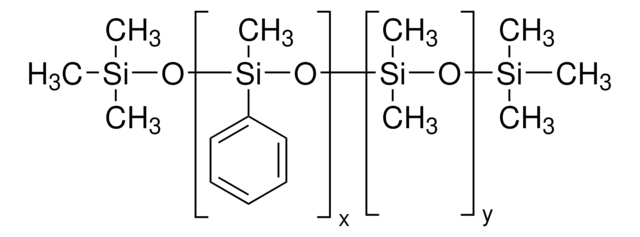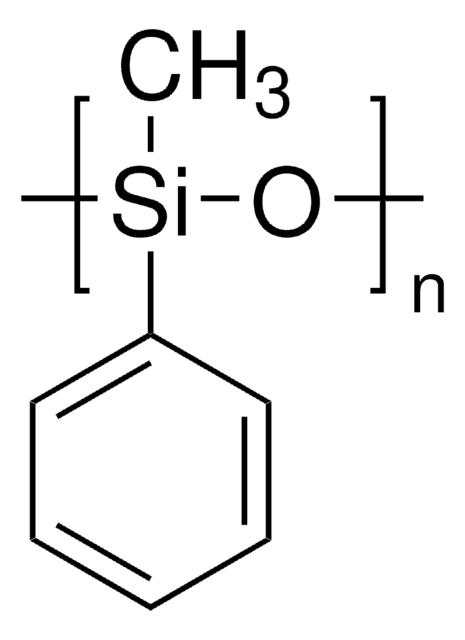923974
Bio-based Polyether Polyol
Mn 900-1100 Da
Sinonimo/i:
1,3-propanediol, Bio-based PPD, Homo polymer, PO3G POLYPROPANEDIOL
About This Item
Prodotti consigliati
PM
Mn 900-1100 Da
Livello qualitativo
Caratteristiche più verdi
Design for Energy Efficiency
Use of Renewable Feedstocks
Learn more about the Principles of Green Chemistry.
Concentrazione
500 ppm in water (QM-AA 1020-114)
Viscosità
200-300 mPa.s(40 °C)
Punto di fusione
12-14 °C
Densità
1.018 g/cm3 at 40 °C
Categoria alternativa più verde
Cerchi prodotti simili? Visita Guida al confronto tra prodotti
Descrizione generale
Applicazioni
It is hydrolysis resistant, has a high oxidative stability and a high thermal capacity, which offers a long durability in end use applications. Among its potential applications:
- High-performance elastomers - High-performace alternative to petroleum-based ingredients used in polyurethane , copolyamides and copolyesters elastomers. It allows an easy drop-in, soft-segment replacement for PTMEG thermoplastic elastomers, offering unique characteristics including good chemical resistance, high mechanical strength and toughness as well as increased softness and elastic recovery. Recently, a study showed that bio-based polypropanediol can be used for selective debonding of polyurethane-based adhesives at the end of their lifetime to facilitate the recycling of expensive components and raw materials from complex devices such as consumer electronics .
- Coatings - It can be used as ingredient or additive for auto refinish, industrial metal coatings and PU dispersions in any or all of the coating layers, replacing any petroleum-based polyols. It provides excellent adhesion to metal, and offers outstanding color dispersion and chip resistance. When used as an additive in clear coating, it provides increased flexibility and improved gravel and flake resistance.
- Ink-jet inks - When added to pigment-based ink-jet ink formulations, it combine the depth and clarity properties of dyes with the inherent durability of pigments.
- Functional fluids - Thanks to its thermal conductivity, thermal stability and lubricity, excellent low temperature properties as well as low toxicity and inherent biodegradability, it is an ideal base fluid for lubricants, dielectric coolants and heat-transfer fluids.
- Footwear and performance textile - Thanks to its superior abrasion resistance and Moisture Vapour Transmission Rate (MVTR), it offers applications in footwear and performance textile applications including synthetic leather.
Nota sulla preparazione
- Before usage, please keep the container sealed and stored at ambient temperature (5-25°C).
- For usage, it is recommended to work under nitrogen atmosphere.
- In case it has to be molten, please do it at temperatures below 70°C and under nitrogen atmosphere.
- Conditions for safe storage, including any incompatibilities: Keep containers tightly closed in a cool, well-ventilated place. Store in original container and keep them away from heat and sources of ignition. Keep under nitrogen. Also keep away from food, drink and animal feedingstuffs.
Codice della classe di stoccaggio
10 - Combustible liquids
Classe di pericolosità dell'acqua (WGK)
WGK 3
Punto d’infiammabilità (°F)
Not applicable
Punto d’infiammabilità (°C)
Not applicable
Scegli una delle versioni più recenti:
Certificati d'analisi (COA)
It looks like we've run into a problem, but you can still download Certificates of Analysis from our Documenti section.
Se ti serve aiuto, non esitare a contattarci Servizio Clienti
Possiedi già questo prodotto?
I documenti relativi ai prodotti acquistati recentemente sono disponibili nell’Archivio dei documenti.
Il team dei nostri ricercatori vanta grande esperienza in tutte le aree della ricerca quali Life Science, scienza dei materiali, sintesi chimica, cromatografia, discipline analitiche, ecc..
Contatta l'Assistenza Tecnica.


![Poly[trimethylolpropane/di(propylene glycol)-alt-adipic acid/phthalic anhydride], polyol average Mn ~500](/deepweb/assets/sigmaaldrich/product/structures/754/225/6e993d83-6b18-473b-a939-bb203d2680fa/640/6e993d83-6b18-473b-a939-bb203d2680fa.png)



